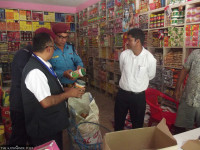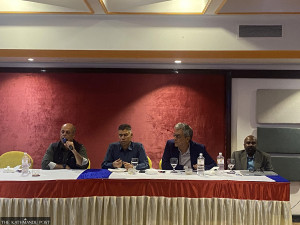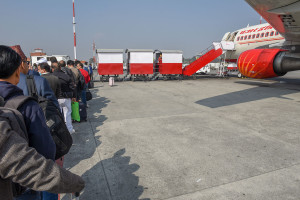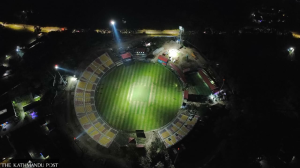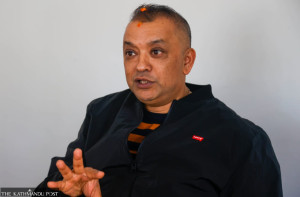Money
Shortage of dollar bills to ease by Monday
Nepali outbound travellers who have been having a hard time getting US dollar bills may soon get some respite as the central bank will be replenishing its stock of greenbacks by Monday.
Rupak D. Sharma
Nepali outbound travellers who have been having a hard time getting US dollar bills may soon get some respite as the central bank will be replenishing its stock of greenbacks by Monday.
Nepal Rastra Bank (NRB) is bringing $10 million in cash from Singapore to ease the shortage of physical dollars in the domestic market where demand is high but supply is low because most foreign visitors now bring electronic cards with them.
This is the first time the central bank is bringing physical dollars from abroad to meet domestic needs.
“Two of our officials are currently in Singapore to deal with the issue,” said a senior NRB official on condition of anonymity. “They are currently checking whether the dollar bills readied for dispatch contain the same prefix and serial numbers given to us.”
Nepal will receive the cash from Singapore’s CIMB Bank where the central bank has an account. “We have asked the bank for fresh dollar bills,” the NRB official said.
The delivery is being made based on an agreement signed between Janak Bahadur Adhikari, executive director of NRB’s Banking Office, and the Singaporean financial institution in October. As per the agreement, private banks operating in Nepal can also contact CIMB for their requirement of dollar bills.
CIMB has agreed to provide the service for a fee of $23,000 (approximately Rs2.46 million) in freight and insurance costs, according to the NRB official. This means the cost of transporting the shipment of $10 million in cash will come to around Rs0.246 per dollar.
“After travel expenses and charges related to handling the consignment are taken into account, the cost of shipment will come to Rs0.30 per dollar,” the official said. “These costs will not be passed on to customers who want US dollars in cash.”
Nepal currently maintains a robust foreign exchange reserve of $9.7 billion, which is almost 45 percent of the gross domestic product (GDP). However, not all this money is in the country or in the form of hard cash. Hence, the shortage.
“We hope this batch of physical dollars will be adequate for around a year,” said the official. “However, if we face a shortage again, we can bring more physical dollars from CIMB without signing another agreement.”
Initially, the central bank had thought the shortage of dollar bills was a short-term phenomenon. But after the situation did not improve for around eight months, it decided to act.
“We had to resort to this measure as the central bank has stocks for two to three months of consumption,” the NRB official said.
While the supply of greenbacks has been depleting, demand has been growing every day. Army personnel who take part in United Nations peace operations abroad, officials working for foreign diplomatic agencies and multilateral agencies, students pursuing studies abroad, Nepali travellers and entrepreneurs, among others, mainly ask for US dollars in cash. NRB probably would not have to bring dollars from Singapore if those going abroad carried dollar-denominated electronic cards. But Nepalis prefer to take hard cash with them, hence the shortage, the central bank officials said.
NRB probably would not have to bring physical dollars from Singapore if those going abroad used dollar-denominated electronic cards. But Nepalis prefer to travel around with hard cash, hence the shortage, the NRB official said. “Also, some immigration offices abroad do not allow Nepalis to enter until they can prove that they have enough money to cover their expenses during their stay. This means Nepali travellers have no option but to show a fat wad of dollar bills. This has also pushed up demand for physical dollars.”




 13.12°C Kathmandu
13.12°C Kathmandu

